“Welcome to Fez, where you from?”
“Australia.”
“G’day maaate! What you looking for?”
“Just walking, thanks.”
“There is nothing this way, it is closed.”
“Really.”
“Really, the lane, it is closed this way.”
“Well, we’ll have a look anyway.”
“The tannery is not this way, you want to go to the tannery?”
“No.”
“Why not?”
“Just don’t want to go to the tannery.”
“Your heart is closed . . . . why not you open up your heart?”
There’s not really much you can say when someone tells you your heart is closed, and for just one second of self-reflection, I wondered whether maybe this savvy teenage street hustler was right, maybe we should go to the tannery…and then I remembered where I was. Welcome to Fez.
This 1,200 year old medieval city, with a population in excess of a million, is a complete assault on the senses; where feeling overwhelmed is pretty much the norm for the uninitiated.
Our first morning here, as we walked the short distance to a nearby gate to meet our guide Nour, we realised we’d left our camera behind at the riad. ‘No problem,’ I said to Dan, ‘you go on and meet Nour’ (around a hundred metres away) ‘and I’ll go back to the riad.’ Dan just looked dubious. ‘I’ll be fine! We’ve only walked about a minute, how hard can it be?’
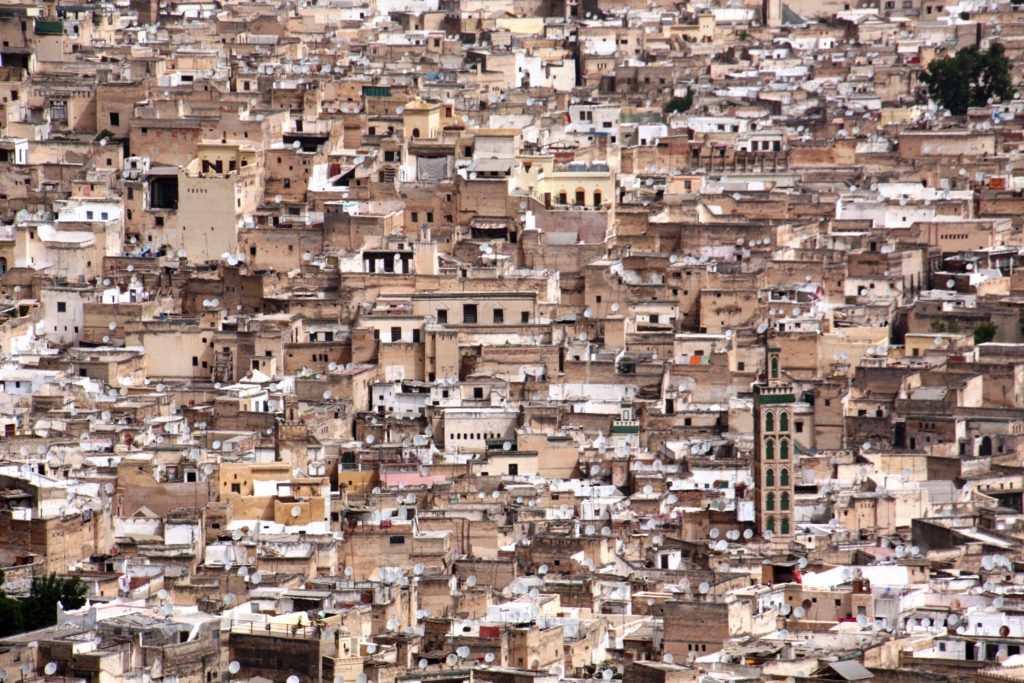
Well, there’s a reason they call the medina the city of 9,000 passages. Suffice it to say, that first journey into the labyrinth of Fez el-Bali wasn’t the last time I (we) ended up completely lost. But it really is all part of the experience…you just have to remember to stay calm and roll with it!
Fez’s medina was Morocco’s first World Heritage site and is apparently the largest car-free urban environment on the planet – full of winding lanes and crowded with busy people, shops bursting with every kind of thing, noisy street stalls, buzzing bazaars, striking mosques (that we peered into from doorways), beautiful old medersas and every kind of hustler. No wonder it’s also full of lost tourists struggling to keep their sense of rising panic in check. But don’t worry, there’s a host of willing kids around to help you find your way if you get lost, for a small fee of course!
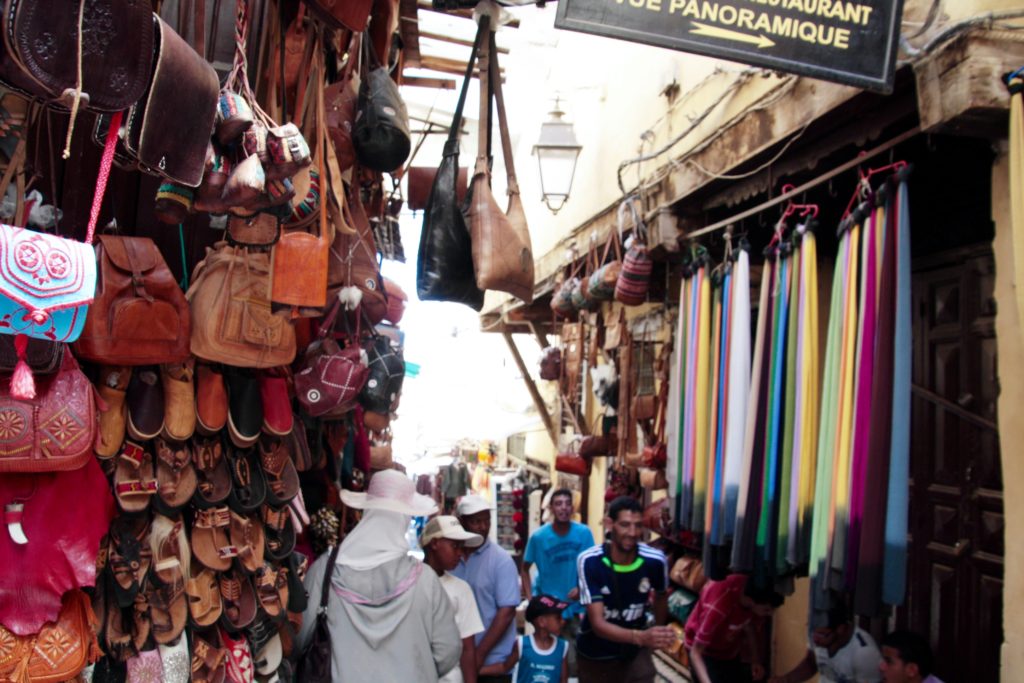
Fortunately our failing attempts at navigation were made easier when we discovered the small stars marking several colour-coded walks through the medina. Posted haphazardly – and sometimes very well-hidden – along the laneways, they all ultimately lead to one or another of the city’s gates. I’m surprised the local kids haven’t vandalised the lot of them, diverting ‘business’ as they do, but had we not found them, we might still be wandering the alleys of Fez looking for an exit!
We had three amazing days in Fez getting lost in the medina, marvelling at the architecture, visiting stunning lookouts, sampling beautiful fresh local organic food, watching students learn Fez’s superb hand-painted pottery and mosaic handicrafts at a local ceramic school, dodging kids playing football in tiny, narrow laneways, and politely declining the pitches of a thousand insistent shopkeepers.
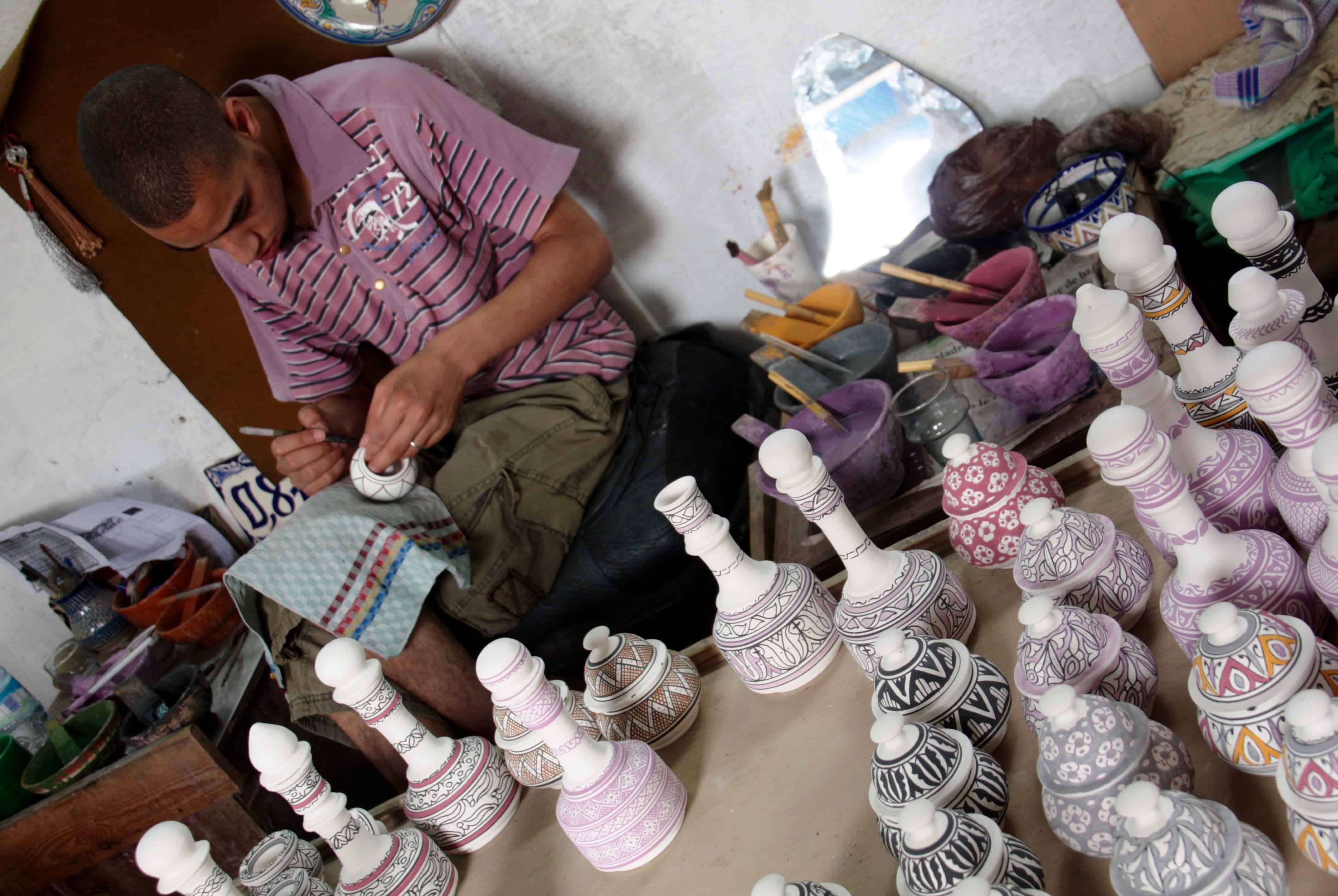
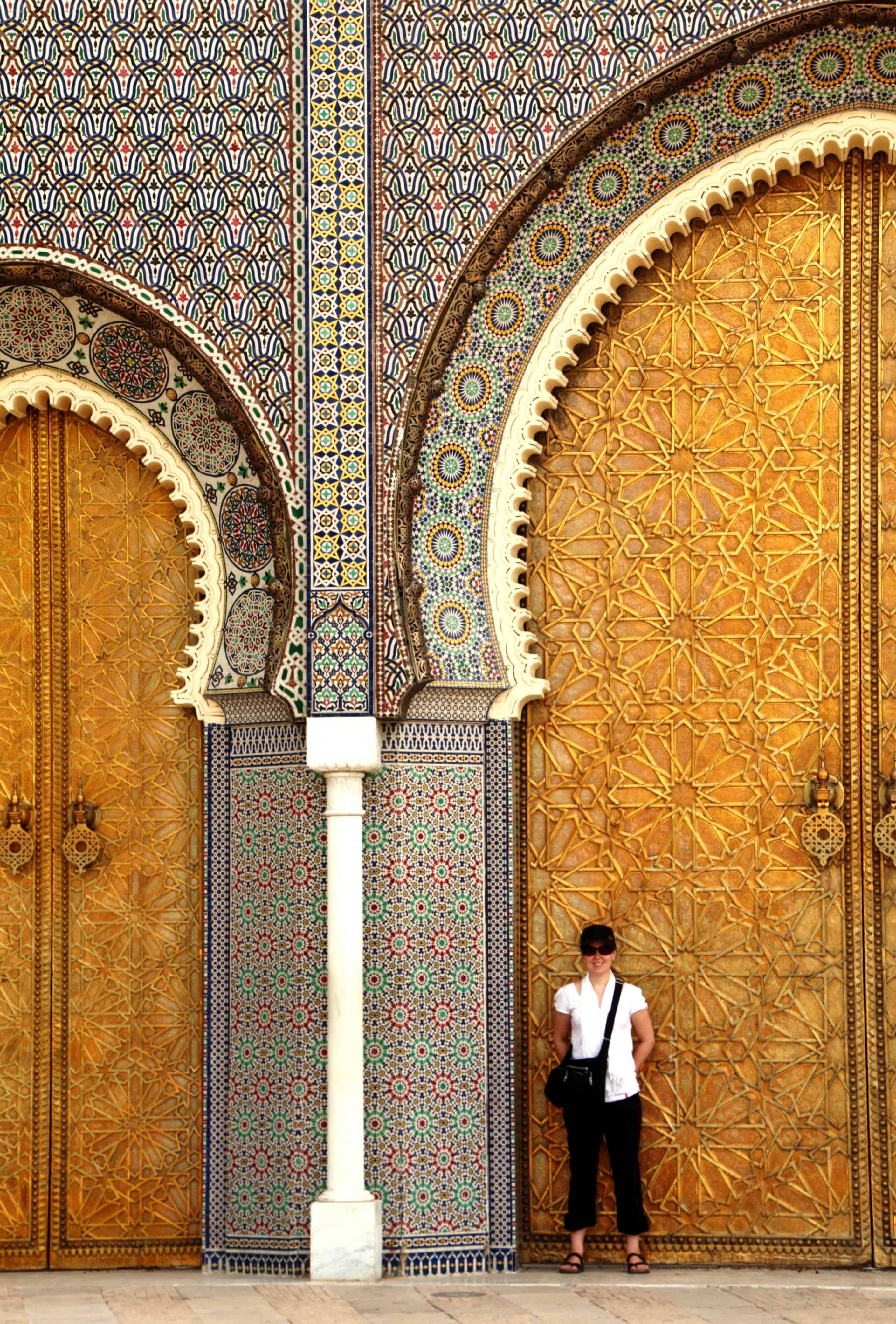
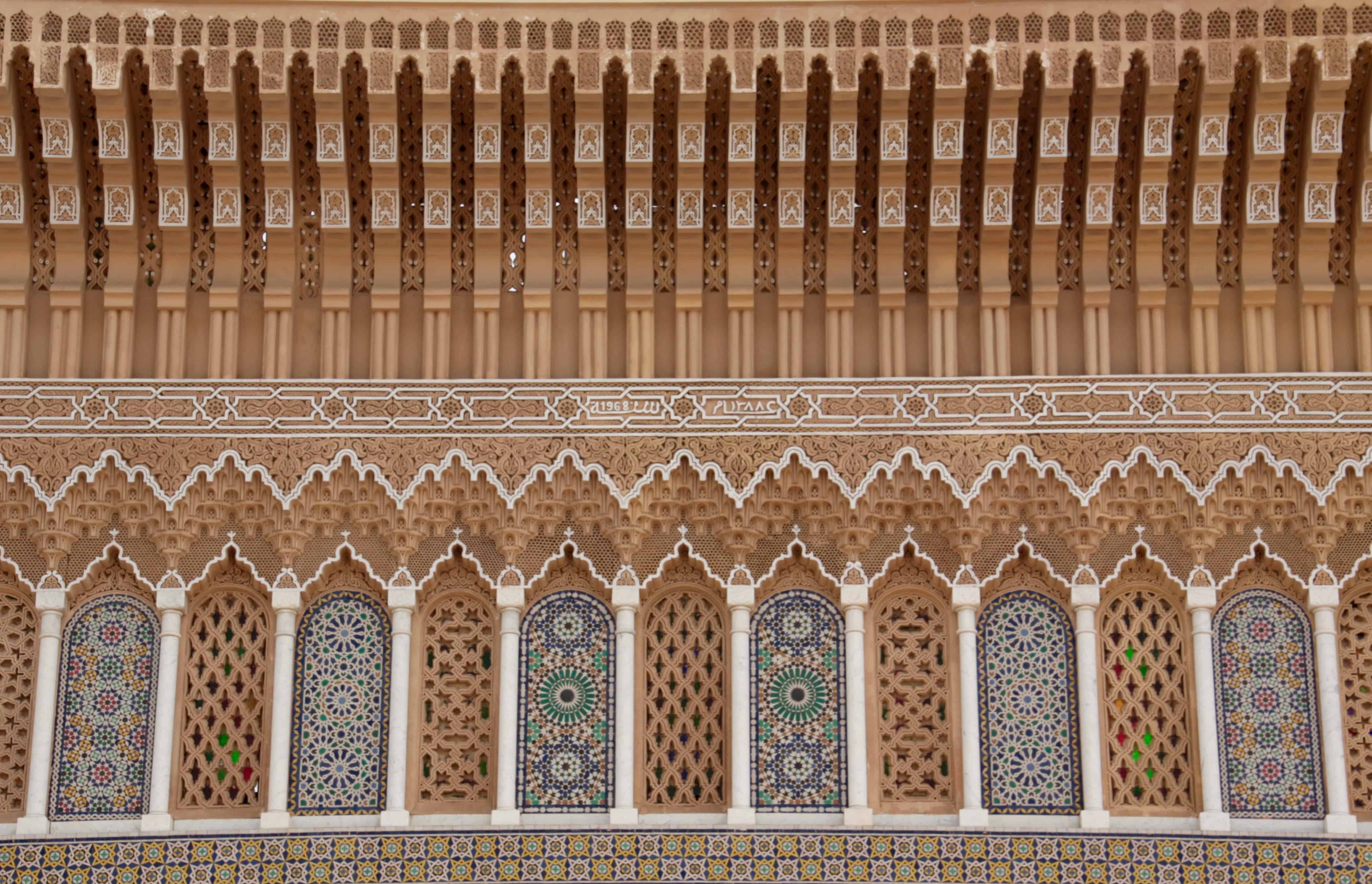
We’d planned to spend another day in this colourful place but, having had such a great time with Nour on the road from Marrakech to Merzouga to Fez, we decided to join him for one more ride on our magic 4×4 carpet – a 350km cruise through northern Morocco to Tangiers via the ancient Roman ruins of Volubilis and the blue mountain retreat of Chefchaouen, both places we had previously written off for lack of time.
Dan was of course very excited about the prospect of visiting another World Heritage site. Ancient Volubilis, on the plains outside of Meknes, started out as the capital of the kingdom of Mauretania before becoming a strategic outpost at the edge of the vast Roman Empire around the 1st century AD. With its amazing, well preserved mosaic floors, large triumphal arch, impressive forum and remnants of huge, wealthy Roman homes, Dan was in her element.
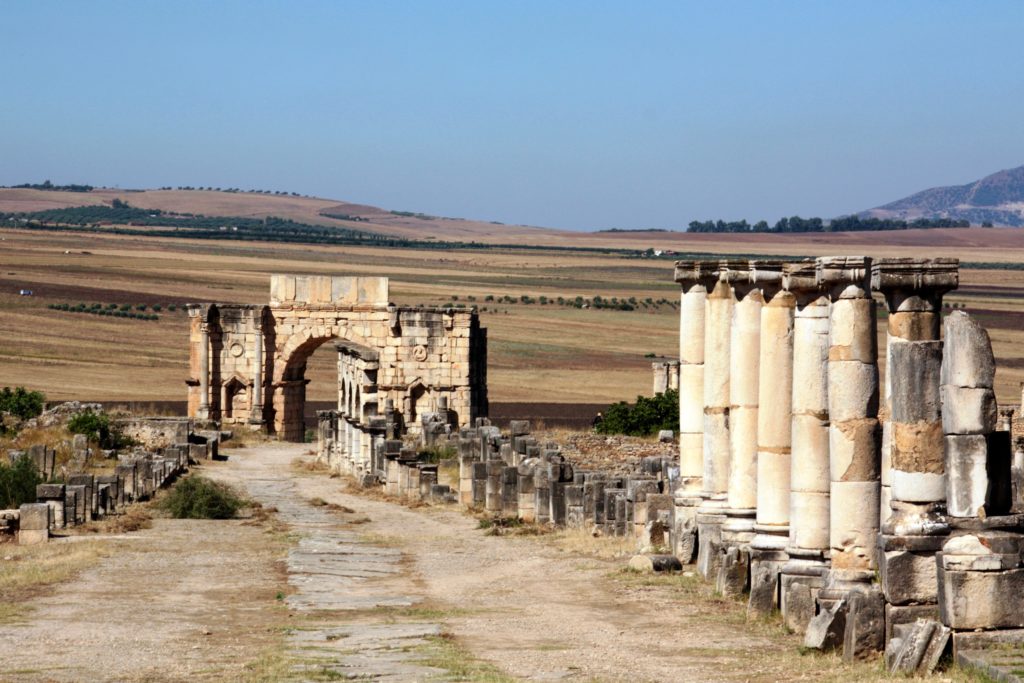
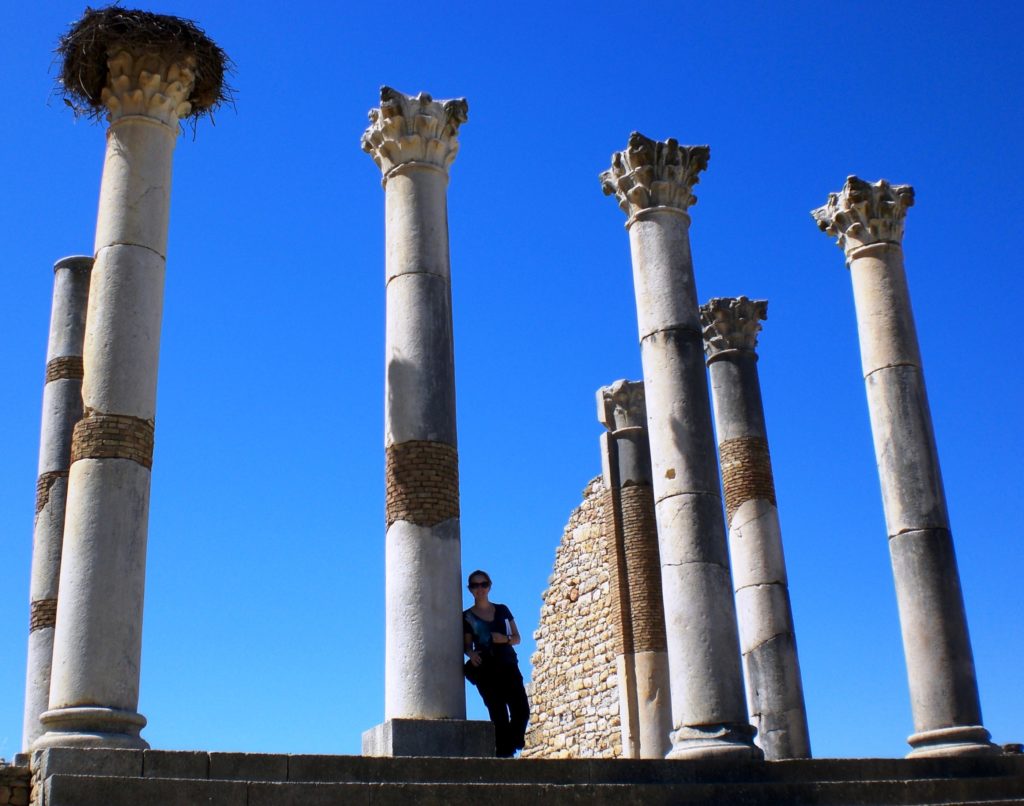
Our next stop, Chefchaouen, translates into Arabic as ‘look at the peaks’, but is better known as the ‘blue medina’ for its unique and beautiful winding lanes of white-washed buildings painted all shades of blue, a legacy of the Jewish community that once lived here.
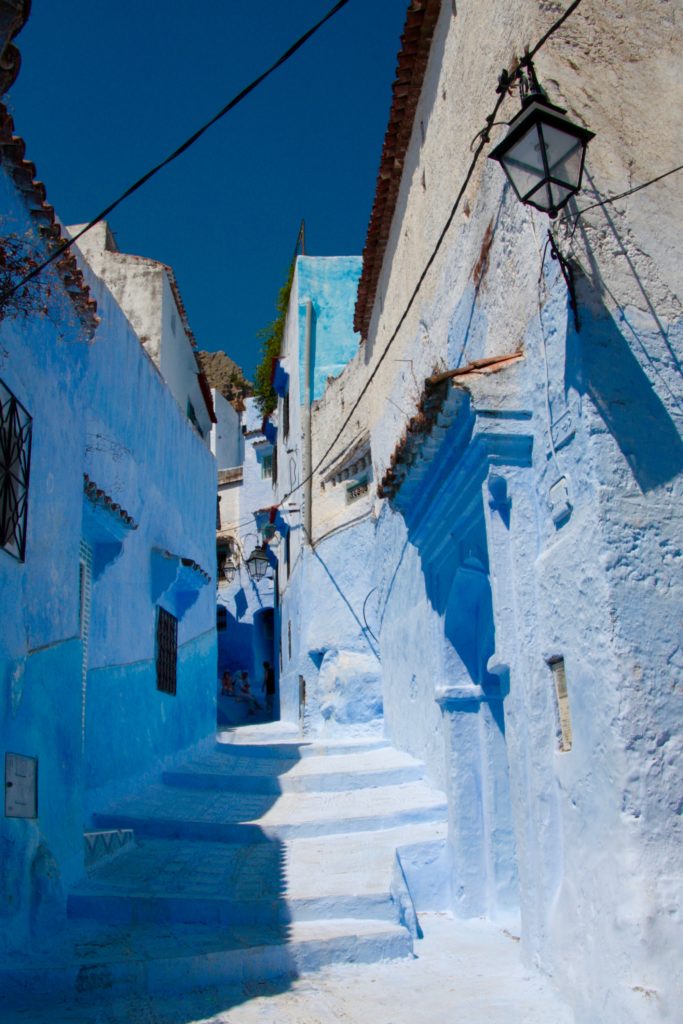
Located in the Rif mountains, this stunning town had us feeling like we were at the cultural crossroads of Europe and Africa as we sat in the main square, Uta el-Hammam, listening to Arabic, Spanish, French, German and English and watching the diversity of attire on display, from full veils, caftans, Jellabas and colourful Gnawa clothes to mini-skirts, crop tops, singlets and the obligatory Barcelona shirts! A surprise musical parade through the town representing the country’s different cultural groups capped off a short but sweet visit.
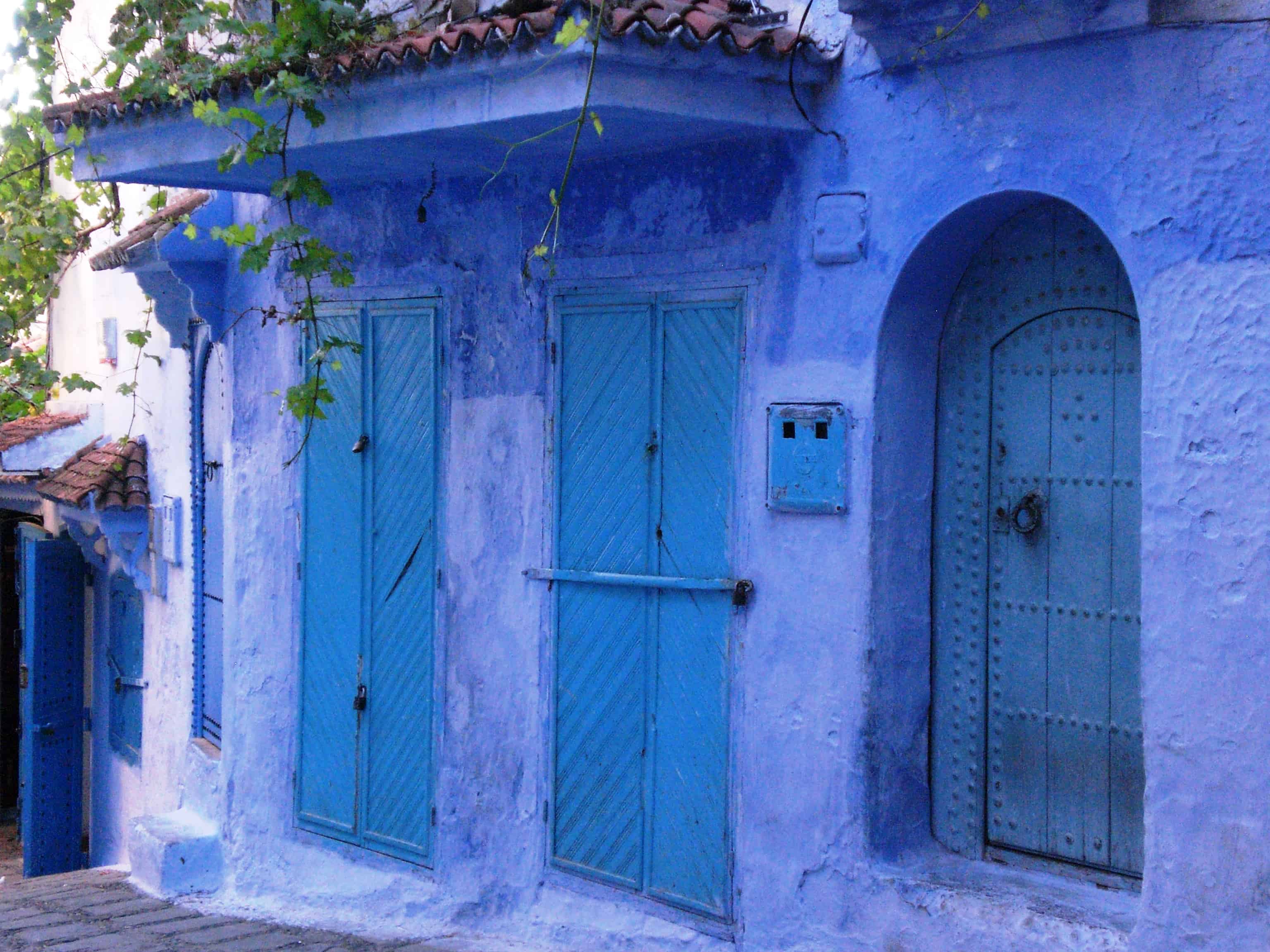
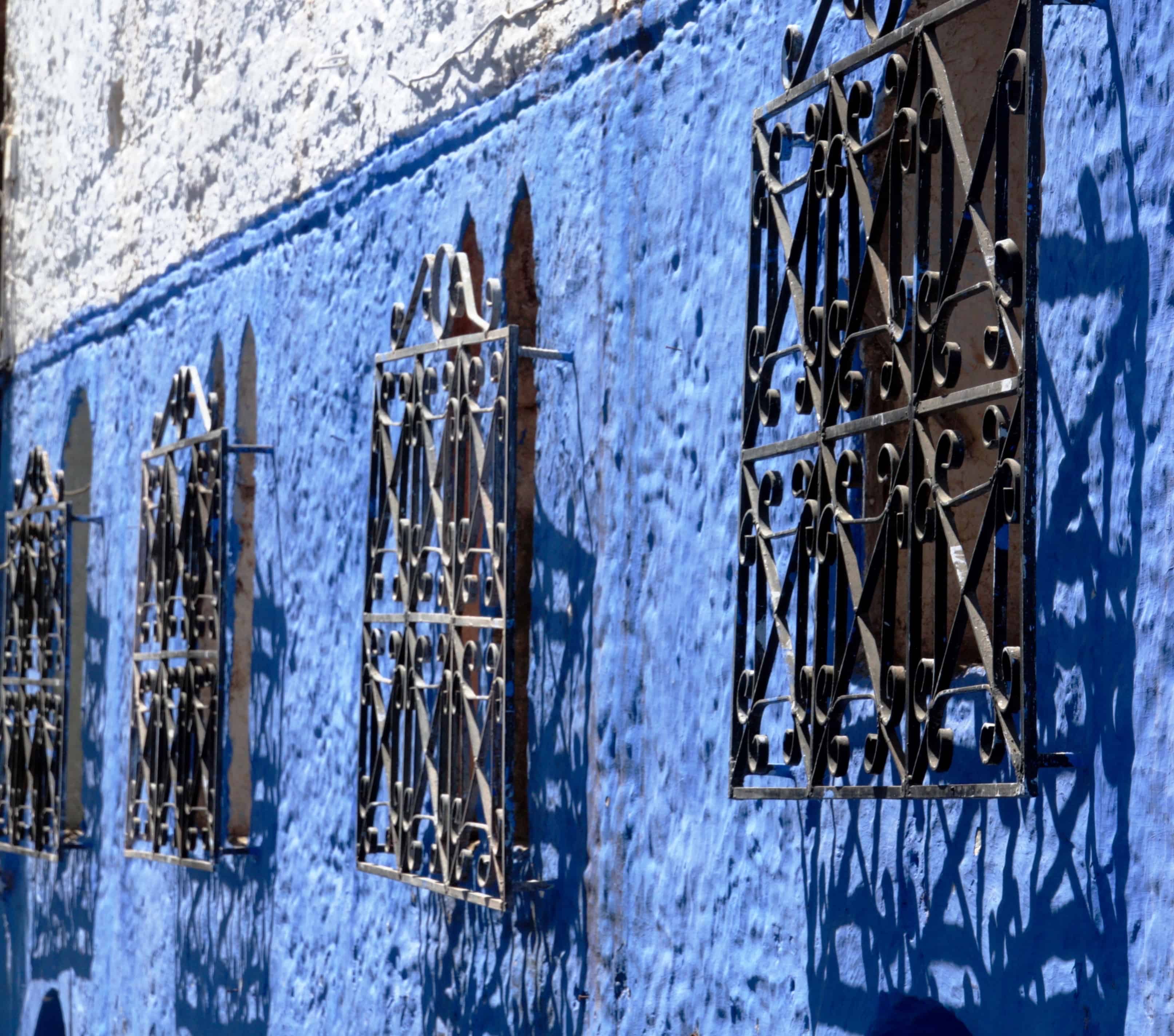
We departed this peaceful mountain oasis at 3:30am the next morning with happy (blue-tinged) memories but, unfortunately for Dan, that most unpleasant of travellers’ complaints – bedbug bites.
Standing in Tangiers Railway Station several hours later, we said our final goodbyes to Nour, our awesome driver and guide for the past week, and now firmly our friend. We also sadly farewelled our magic 4×4. From Tangiers, we made a gruelling twelve hour trip to Essaouira via two trains and an intercity bus. We got there in the end, despite the air-con breaking down on the second train and the slowest bus journey in history.
Essaouira, known as the ‘windy city’, is a blustery town right on the sea with impressive defensive walls. We found it blissfully cool, well, compared with everywhere else we’d been in Morocco; we even needed to wear jumpers in the evening, making Dan a happy (if still itchy) camper.
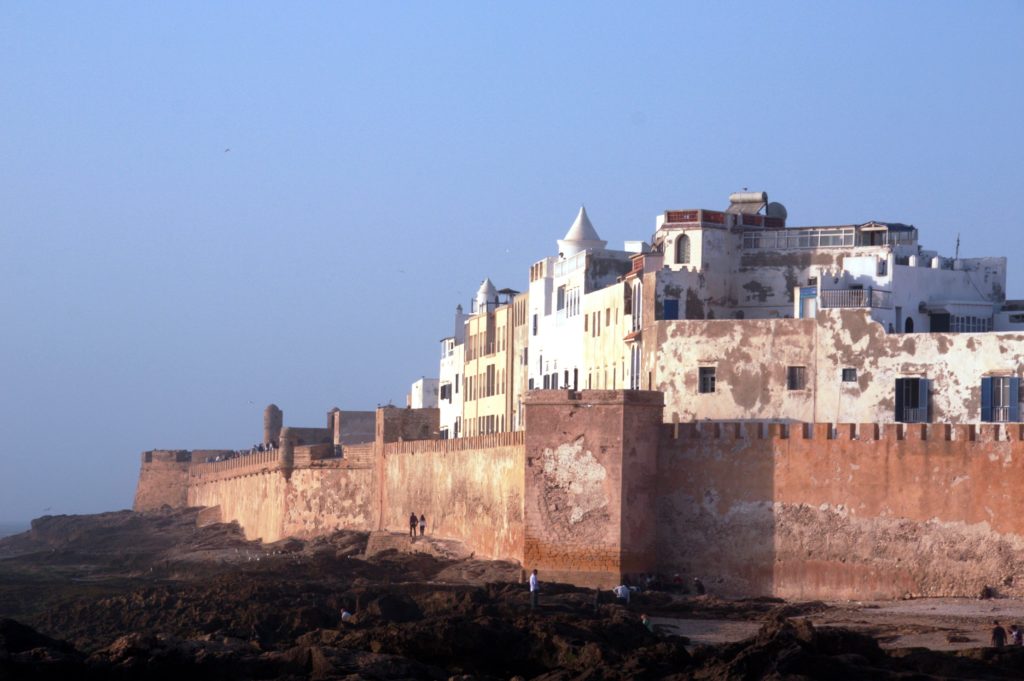
It was a good place to rest up for a couple of days and bring our body temps down, wandering the sea-front, exploring the walled city and eating freshly caught and cooked seafood at the fish market.
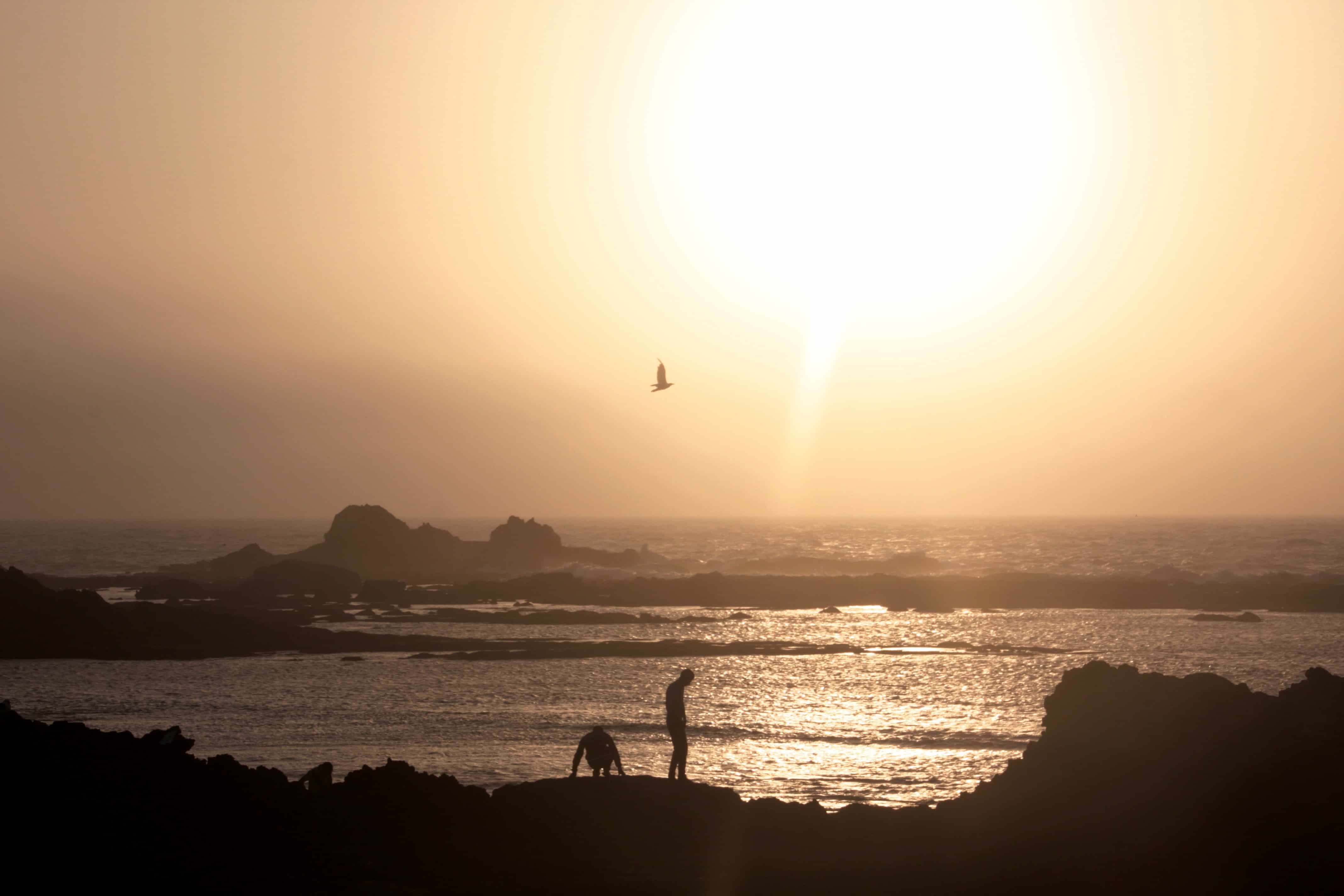
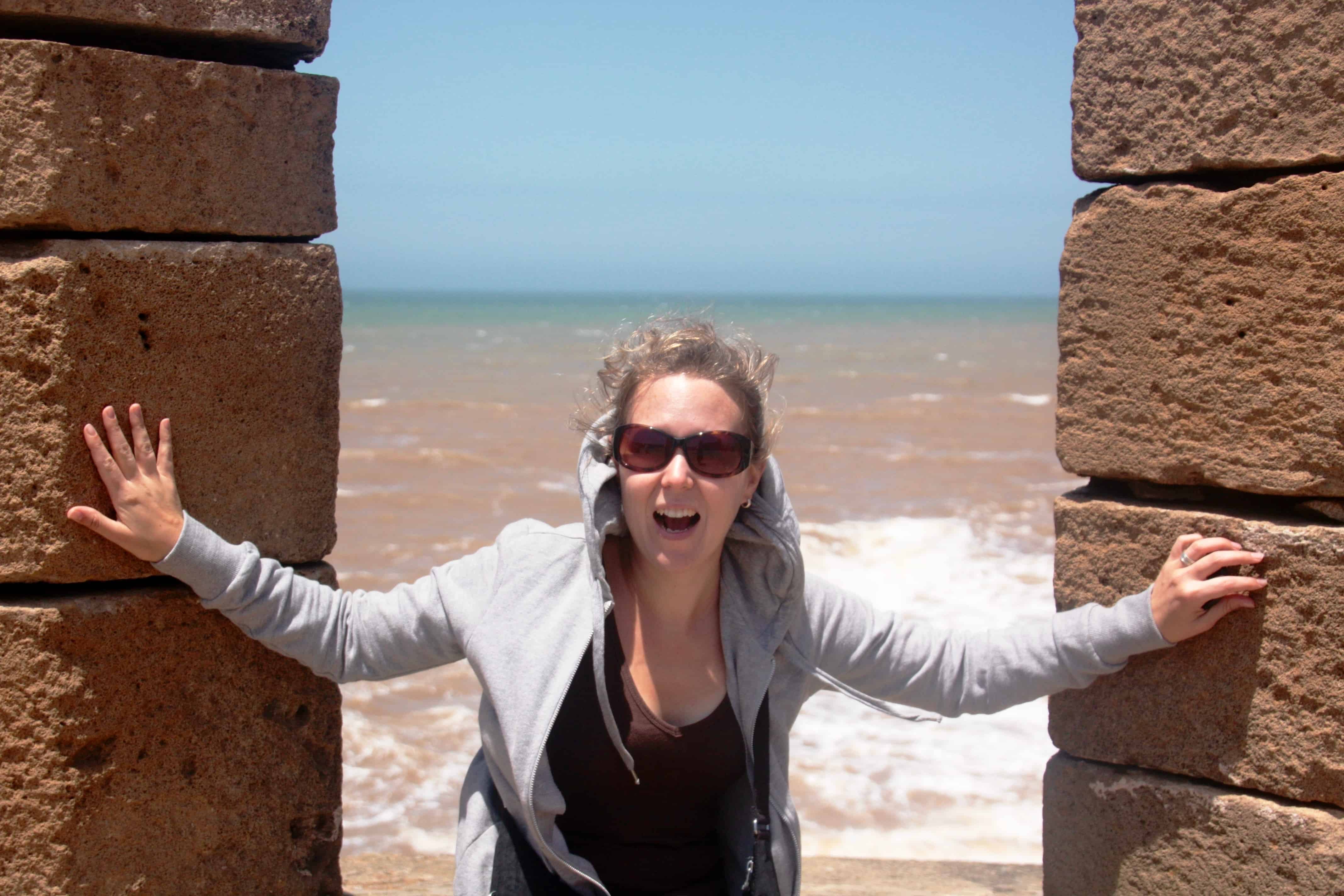
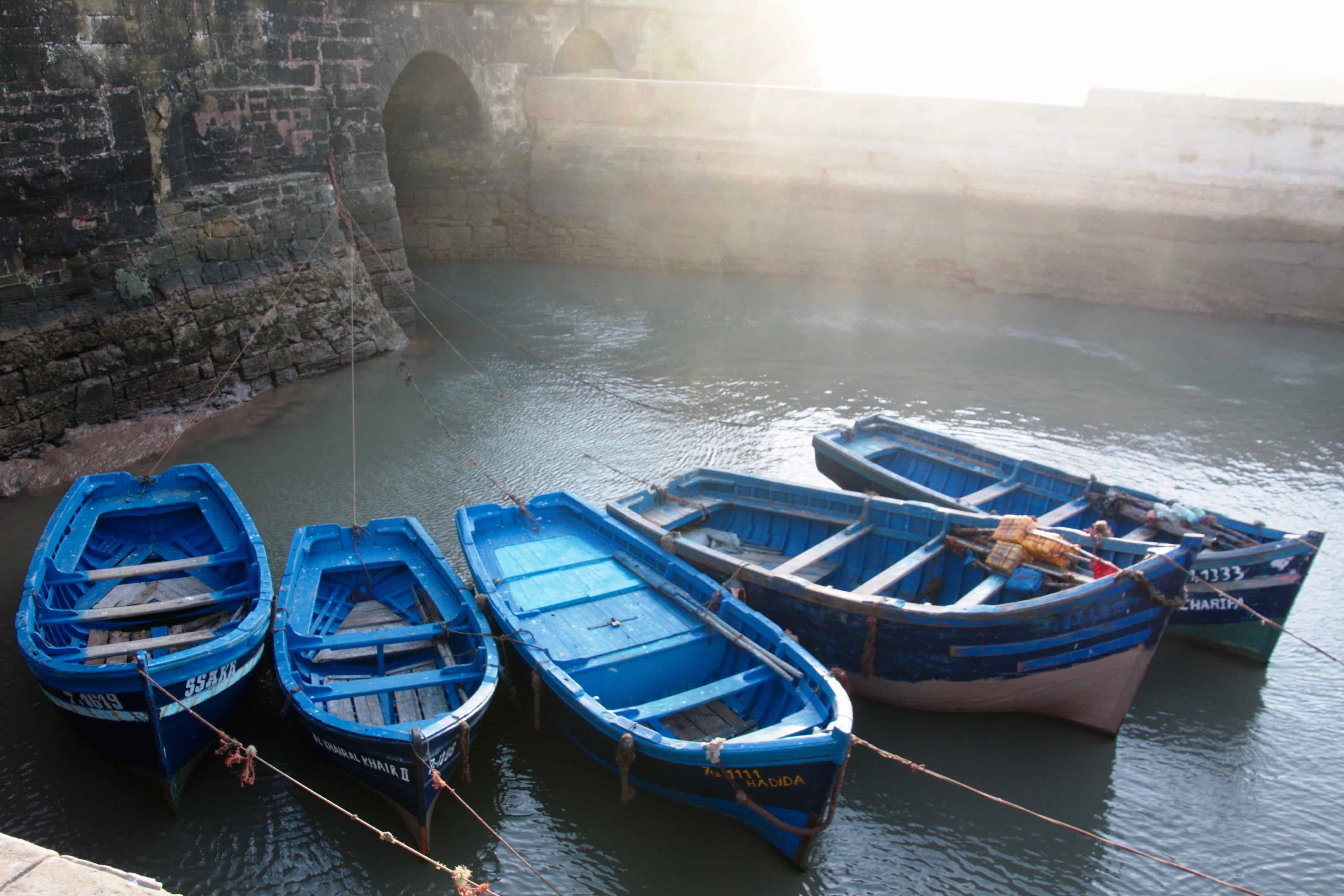
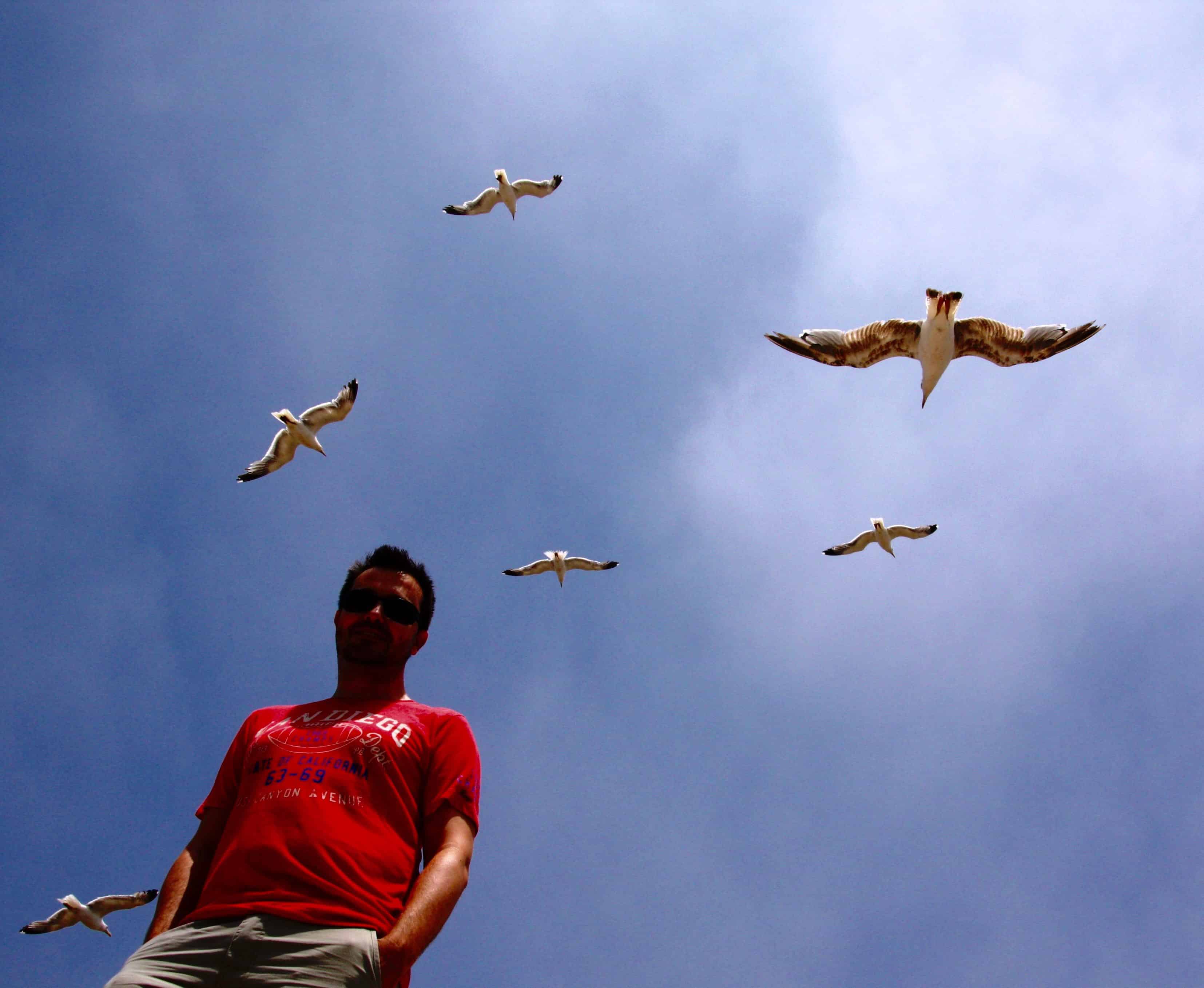
The only downside really was our riad which, on the cheaper end of the spectrum, had a plumbing problem (not great when you’re travelling with randomly bad stomachs), toilet paper on rations (really not great when you’re travelling with randomly bad stomachs), and no room fan or aircon, in itself not a problem but an issue here when opening the windows meant inviting in the riad’s hungry mozzie contingent.
Bring on the five star Marrakech birthday treatment, I say!
Good to know
Touring: We travelled through Morocco with Nour of Around Morocco Tours, customising a seven day journey from Marrakech to Merzouga to Fez and then on to Tangiers, and seeing everything we could in between. We found the experience of having a local driver and guide, while more expensive than doing it independently, gave us a money-can’t-buy insight into the culture, history and people of Morocco that we’ll never forget.
Tip: If you’re staying in the medina in Fez, make a point to scout out your local shops and key navigation markers before you go wandering. It will help when you’re lost. And you will be. Own it.
Tip: Moroccan food is up there as a favourite cuisine for us. Some standouts in Fez and Essouira: try Pastilla in Fez, a sweet and savoury baklava-like pastry with chicken. And definitely head to the Essouira fish market for lunch. It’s chaotic and a bit run down, but the fish is super fresh and cooked to perfection.
Check out our other posts from Morocco, including our gallery of pics from this amazing country.
